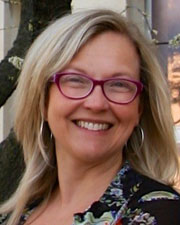Research by Primary Investigator
Nancy Ann Hamilton

Current Projects
Student Trauma and Nightmare Development- Understanding Physiology (STAND-UP)
The primary purpose of STAND-UP is to investigate the physiological inferences of post-traumatic nightmares in victims of sexual assault. We seek to further understand the development of post-traumatic symptoms following a traumatic event and the development of nightmares.
The Dream Machine
The Dream Machine is a collection of projects designed to use AI technology to understand the emotional content in dreams. Current projects include developing effective sentiment analysis tools to code dream narratives and animation tools to create animated videos based on dream narratives. The goal for these projects is to better understand the role of dreaming as an emotion regulation process and to augment established rescripting therapies used to treat post-trauma nightmares
Continuous-RoBERTa, Sentiment Analysis Tools
This project is focused on creating code to analyze dream reports to assess for emotional intensities using pre-trained transformer models.
Paused Projects
Project Mindy
Project Mindy (real name and with her enthusiastic consent) was named after a student who was sexually assaulted while a student at KU. She is not only a survivor but has also thrived following that traumatic experience. In her honor, the goal of Project Mindy is to learn about how to help people thrive following sexual assault by understanding how sleep changes in the six months following sexual assault. The goal of this project of using that information to devise interventions to prevent the trajectory of trauma to PTSD symptoms.
Project Fire
Project Fire is a collection of projects designed to understand the unique sleep problems faced by career and volunteer firefighters and ultimately to develop strategies to improve sleep quality either by changing environmental sources of sleep disturbance or by addressing individual sleep problems.
Past Projects
Student Trauma and Nightmare Development (STAND)
The primary purpose of STAND is to assess the prevalence of traumatic experiences and posttrauma symptoms in KU’s student body. We seek to understand sex differences in exposure and response to traumatic events and to understand the role that sleep plays in the trajectory from a traumatic experience to posttrauma stress disorder (PTSD) symptomatology.
Assessing Triggers of Posttrauma Nightmares (AT NIGHT)
AT Night uses a combination of ambulatory assessment and a longitudinal research design to capture antecedents of postrauma nightmares in a sample of individuals experiencing nightmares related to the trauma of sexual assault.
Things that Go Bump in the Night
This project aims to examine the environmental characteristics associated with negative sleep performance in career fire fighters.